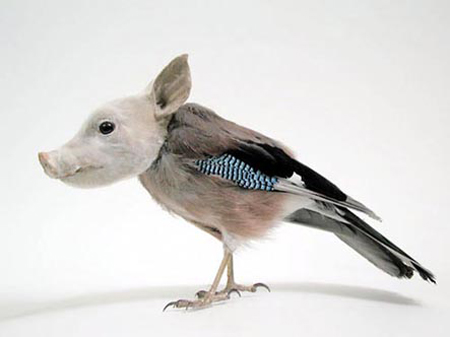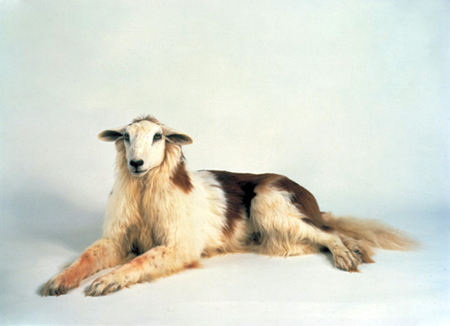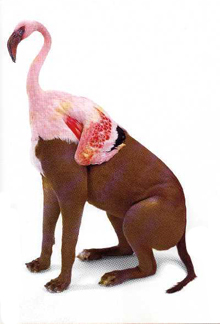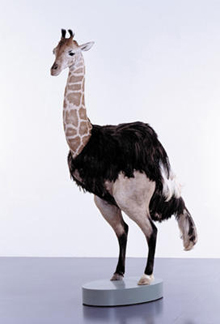Animal Anomalies
Thomas Grünfeld
Misfit (Pig/Bird), 2001
Misfit (St.Bernard/Sheep), 1994
Thomas Grünfeld’s anomalous creations are some of the strangest and most surreal of contemporary taxidermy. The creatures from his appropriately titled Misfit series are composed of bits and pieces of animals, all flawlessly sewn together to create entirely new species. The Misfits are reminiscent of early natural histories in which strange and unfamiliar animals were described according to the bits and pieces of well known creatures. For example, the camelopard, now known as the giraffe, was described having the height and neck of a camel, the head of a stag although somewhat smaller, the teeth and feet of an ox, and a leopard’s spots. The armadillo was a pig with a turtle’s shell, and the sloth, part bear, part ape. The platypus displayed complete anatomical confusion, seeming to “possess a three fold nature, that of a fish, a bird, and a quadraped” as Thomas Bewick wrote in 1824. On inspecting the skin of a platypus for the first time in 1802, George Shaw, director of the British Museum, observed that it appeared to have “the beak of a Duck engrafted on the head of a quadruped.” Such a hybrid animal seemed too strange to be true, and Shaw claimed that “it is impossible not to entertain some doubts as to the genuine nature of the animal, and to surmise that there might have been some arts of deception in its structure.” In fact the specimen Shaw examined still bears the marks from his efforts to prise the beak off. As Shaw highlights, it is only a small step from describing animals as if they were composite to actually making a new species.



